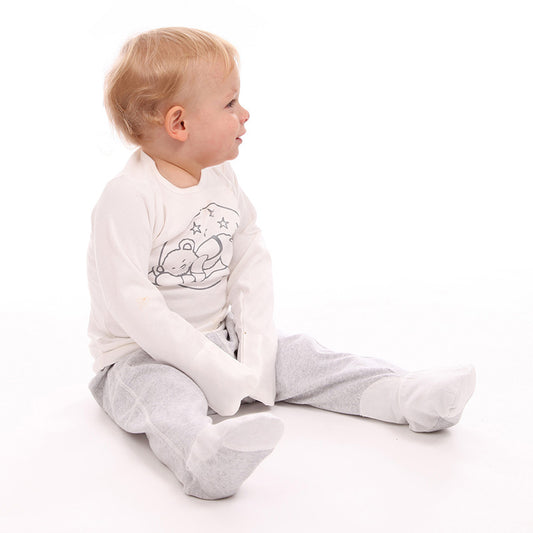Cradle Cap
Cradle cap is the yellow, greasy crusted skin that can appear on a baby’s scalp. It doesn’t look nice but it’s nothing to worry about and will clear up naturally, but there are ways of reducing or even completely getting rid of cradle cap.
What is Cradle Cap?
Cradle cap, also known as infantile or neonatal seborrhoeic dermatitis, is a yellow, crusted skin rash situated on a babies scalp. The cause of cradle cap is not clear but it is thought to be related to over active sebum glands, with the excess sebum causing old skin cells to stick to the scalp, instead of drying up and falling off as they would normally do. It is not contagious and is not due an allergy or lack of cleanliness.

While cradle cap typically occurs on a baby’s scalp, it can also occur on the face, ears (especially in the folds) and neck, or at the back of the knees and armpits. Cradle cap usually appears in babies in the first two months and tends to clear up by itself after a few weeks or months, although it can last much longer. Our daughter still had traces of cradle cap along her hair-line and slightly crusty ears on her third birthday.
Ways to Treat Cradle Cap
Gently wash your baby’s scalp with a mild baby shampoo - this will prevent a build-up of skin and flakes. At night, massage the baby’s scalp with natural oils such as coconut or almond oil (using olive oil is no longer recommended as it is thought to thin the skin1).
A Swedish study2 found good results from massaging the scalp with small amounts starflower (borage) oil twice a day. Other home remedies include aloe vera, honey, tea tree oil, coconut oil and breast milk. All of these can be used on the baby’s head in moderation although there have been no formal studies on their effectiveness.
These treatment help to soften and loosen the cradle cap flakes and scales. Gently brushing the hair will also loosen any extra skin. Do not pick the skin flakes as this could cause scarring and discomfort.
If mild shampoos are not effective then switch to a stronger shampoo developed especially for cradle cap. These will not harm your baby’s skin and they are available at most pharmacies. It is vital that you check the product for any ingredients that your baby may be allergic to. Also, do not get the shampoo into the baby’s eyes and always seek advice from your pharmacist.
When to go the Doctor
There is no need to visit a doctor provided that it is not itchy and it does not cause your baby any pain. If scaly skin on your baby’s head or face appears to itchy or bothering them, it is worth checking that it is not baby eczema with your doctor as the two conditions can look similar. Also, if your baby is suffering from other symptoms as well as cradle cap, such as diarrhoea or constant colds, then this could be linked to a low immune system. In this case a doctor should be consulted. The doctor may prescribe an antifungal soap such as ketoconazole which can work with just one application.
Our sources
- Cooke, A. et al. (2016, March). Olive oil, sunflower oil or no oil for baby dry skin or massage: A pilot, assessor-blinded, randomized controlled trial (the oil in baby skincare [observe] study). Acta dermato-venereologica. https://pubmed.ncbi.nlm.nih.gov/26551528/
- Tollesson, A., & Frithz, A. (1993, July). Borage Oil, an effective new treatment for infantile seborrhoeic dermatitis. The British Journal of Dermatology. https://pubmed.ncbi.nlm.nih.gov/8396411/
Quick Buy
-
Cross-over ScratchSleeves
Regular price From €23,95 EURRegular priceUnit price / per -
Flip-mitt bodysuits
Regular price From €23,95 EURRegular priceUnit price / per -
Original Cream
Regular price From €14,50 EURRegular priceUnit price / per -
Sleepy Bear PJ Sets
Regular price From €30,95 EURRegular priceUnit price / per








